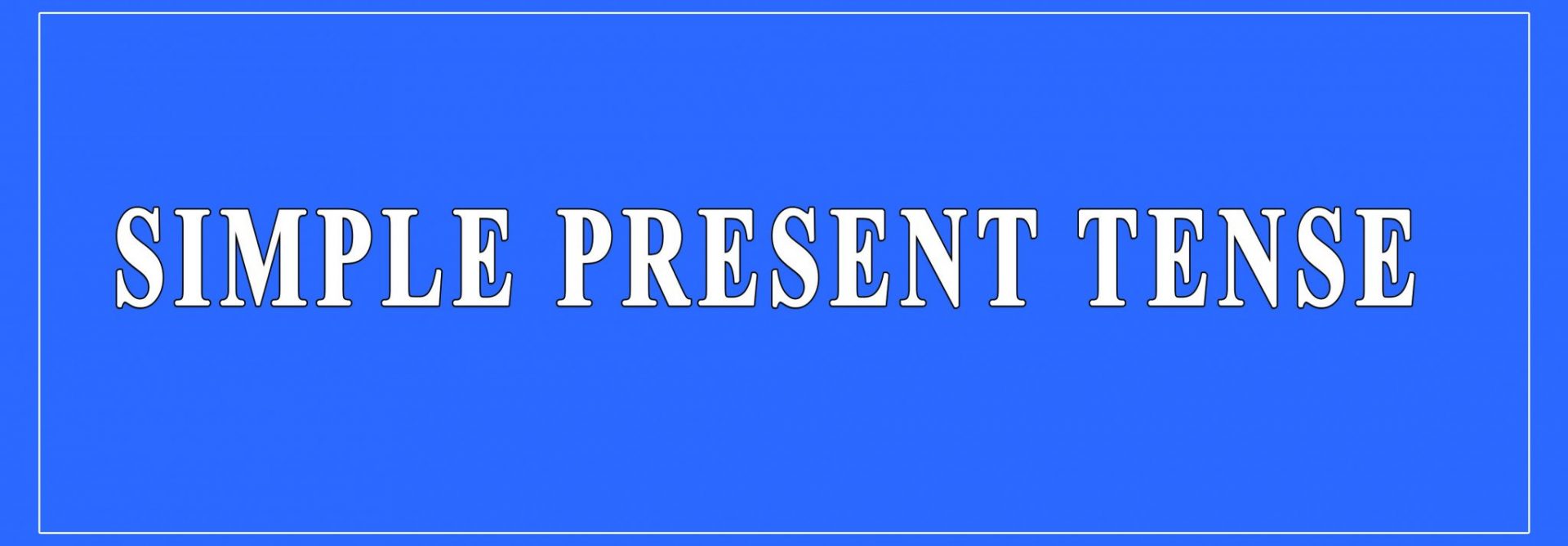Simple present tense is used to talk about habitual or usual actions in the present and it also talks about daily event or universal fact.The action can be a habit, a hobby, a scheduled event or something that often happens.

Sentence Structure
Note: If the subject in a sentence is “he, she, it, singular or proper noun” then “s” “es” or “ies” is added to the first form of verb or base form in the sentence.
Positive: (Subject + 1st form of verb +(s, es or ies) + Object)
- I study English.
Negative: (Subject + does not/ do not + 1st from of verb + Object)
- I do not study English.
Interrogative: (Do/ does + Subject + 1st from of verb + Object + ?)
- Do I study English?
- Ali jogs everyday.=> Repeating actions or habits.
- Every twelve months, the Earth circles the Sun.=> Facts or things which are true.
- Does the Sun circle the Earth?=> Universal fact.
- When does the train usually leave?=> Scheduled event
Spelling for the third person singular (he, she, it)
Adding “s, es, -ies
Normally, we add -s for the verbs in positive sentences of simple present tense.
- The match starts at 7 o’clock.
- She usually tells lie.
- He wakes up at 6 AM.
If a verb ends with these letters (s, sh, ch, x, z) we add ‘es’ at the end of the verb in positive sentence.
- Blesses, passes
- Washes, wishes
- Catches, teaches
- Fixes, relaxes
- Buzzes, fizzes
If a verb ends with consonant + y we change y to ‘ies’ at the of the verb.
- Fly = flies
- Apply = applies
If a verb ends with vowel + y, we only add ‘s’ at the end of the verb.
- Play = plays
- Pray = prays
More uses of Simple present tense
Facts or Generalizations
The Simple Present can also indicate the speaker believes that a fact was true before, is true now, and will be true in the future. It is not important if the speaker is correct about the fact. It is also used to make generalizations about people or things.
- Cats like milk.
- Birds do not like milk.
- Quetta is in Pakistan.
Scheduled Events in the Near Future
Speakers occasionally use Simple Present to talk about scheduled events in the near future. This is most commonly done when talking about public transportation, but it can be used with other scheduled events as well.
- The train leaves tonight at 6 PM.
- The bus does not arrive at 11 AM, it arrives at 11 PM.
- When does class begin tomorrow?
Now (Non-Continuous Verbs)
Speakers sometimes use the Simple Present to express the idea that an action is happening or is not happening now. This can only be done with Non-Continuous Verbs and certain Mixed Verbs.
- I am here now.
- She is not here now.
- He needs help right now.
Also Attempt: Exercises

